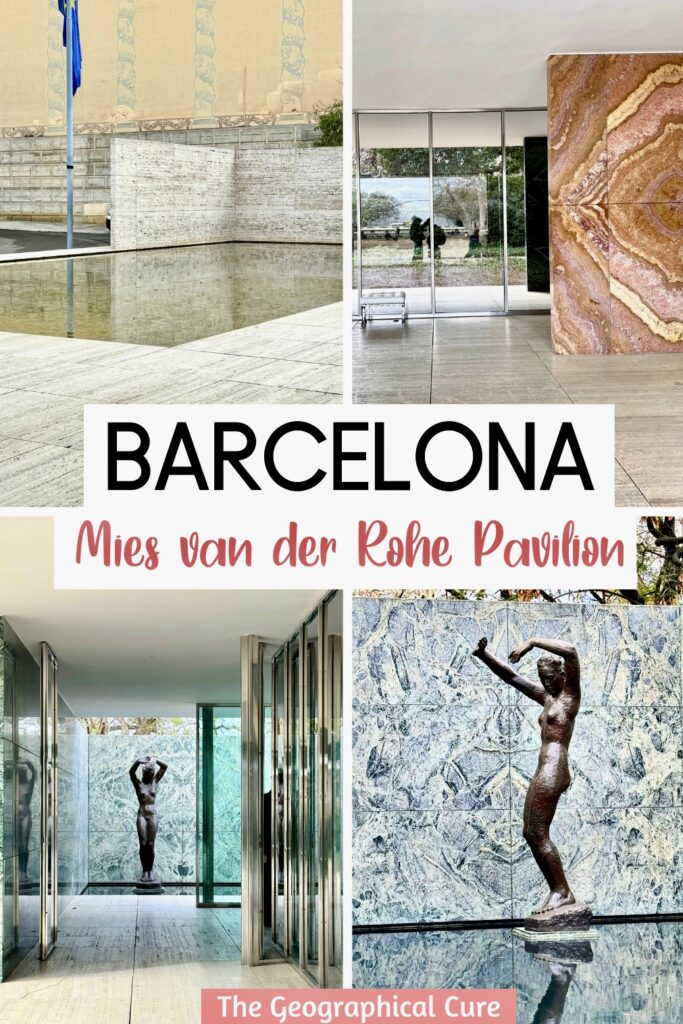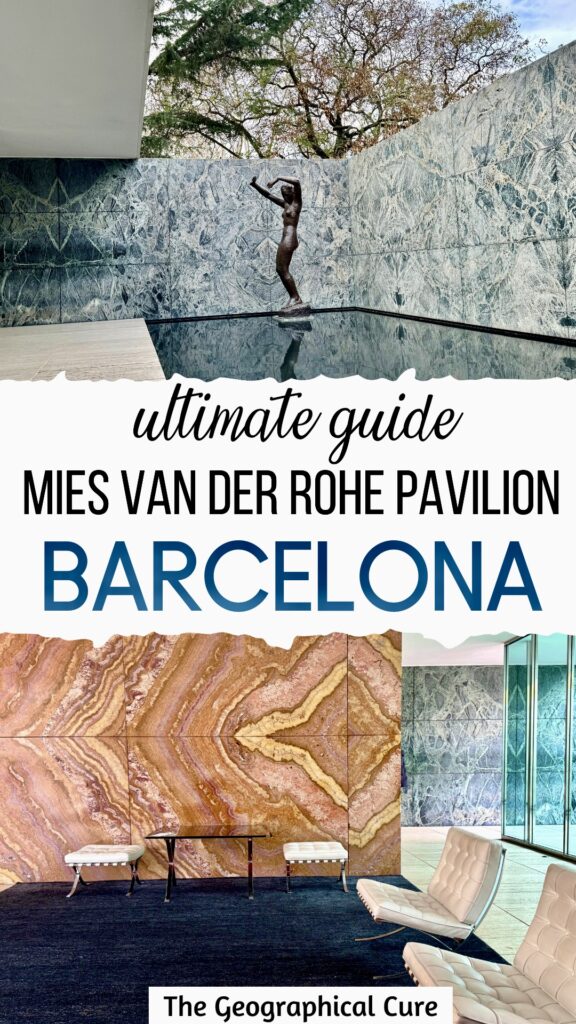So you may be wondering, should you visit the Mies van der Pavilion when you’re on Montjuic Hill?
The answer is it depends. If you are a devotee of modern architecture, a visit is a must do.
If not, given the rather hefty entrance fee, it’s skippable. Instead, you can walk around the minimalist building to get a sense of modern flair.
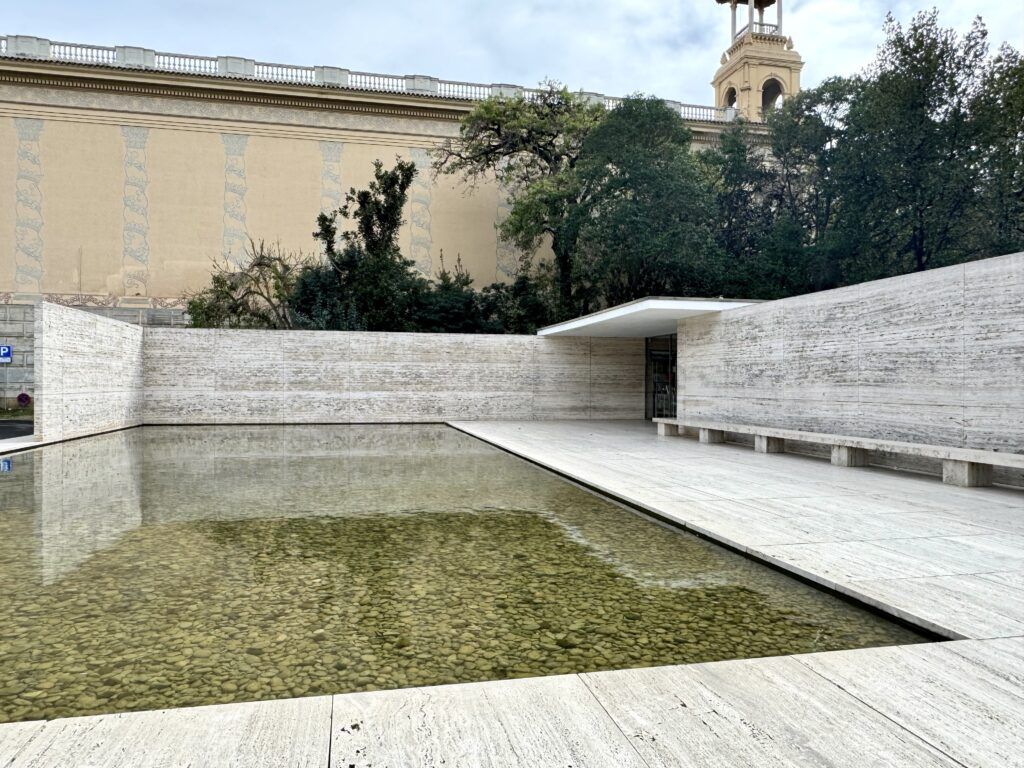
What Is The Pavello Mies Van Der Rohe?
In 1929, the German government commissioned the Bauhaus architect Mies van der Rohe to design for German Pavilion at the year’s International Exhibition in Barcelona.
The Germans wanted a statement piece that would represent Weimar Germany as culturally progressive and pacifist.
At the time, the architect was part of the avant garde in Germany and becoming internationally known as an influential modernist.
Van der Rohe’s motto was simplicity. He coined the phrase “less is more.”
Mies wanted to create “honest” and functional buildings that were devoid of decoration or extraneous additions.
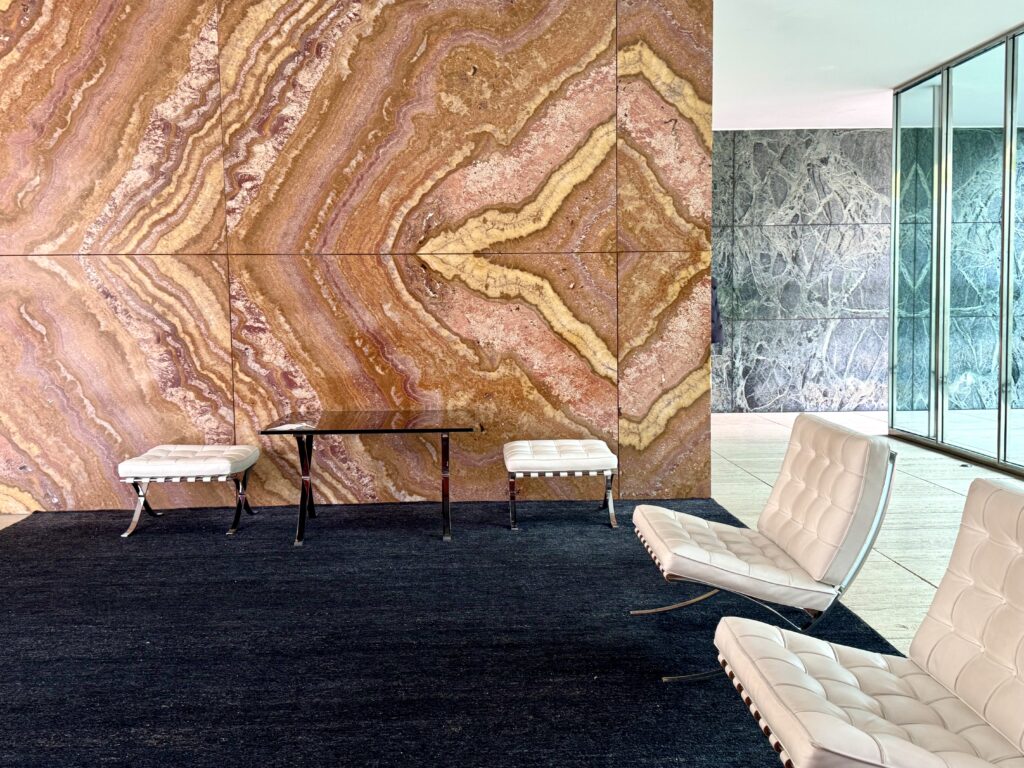
His pavilion design was an airy sequence of spaces on a travertine platform. There are straight horizontal lines alongside thin, vertical columns, creating a simple yet striking look. The spare building seems almost to float in space.
It was defined by a series of planes wall of sumptuous marble, onyx and frosted glass. The glass walls blend the inside with the outside smoothly.
The pavilion was an overnight sensation, heralded as a seminal example of modern architecture. Yet, it was meant to be temporary and was torn down after only six months.
In 1986, a coterie of Mies admirers banded together to rebuild the pavilion on its original site right in front of the Magic Fountain.
As a result, while beautiful, the building feels a bit like an architectural artifact, at once out of place and out of time.
It was an unreal building essentially built as a folly. Still, for architecture enthusiasts, it’s spatial perfection.
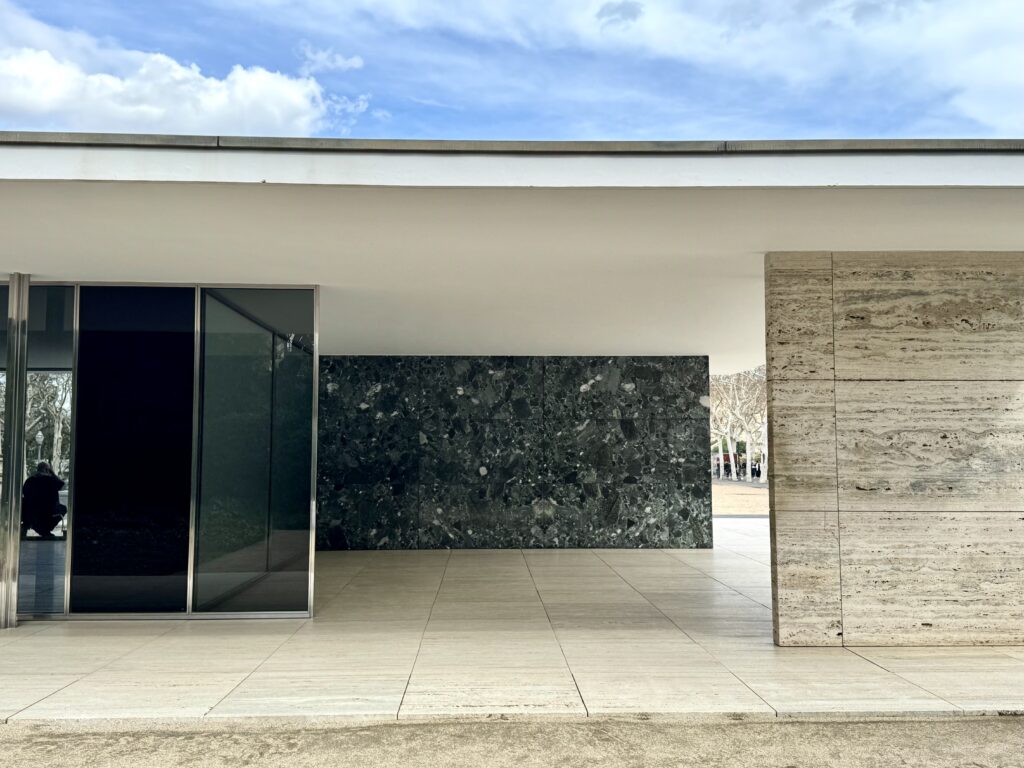
Visiting The Mies van der Rohe Pavilion
There are essentially three parts to visit:
- outdoor courtyard with a large pool
- indoor core of the one story building
- small courtyard with pool and sculpture
One pool is a small and shallow pool, located in front of the pavilion and lined with stones at the bottom. It reflects the building and its surroundings, adding a sense of tranquility and continuity with the environment.
The other, more prominent pool, is lined with black glass. It includes a striking bronze sculpture by Georg Kolbe, a van der Rohe contemporary. It’s set on a plinth and positioned so it reflects in the water.
The water features are key to the architect’s ethos. They are integral to the serene and meditative atmosphere of the pavilion. They underscore van der Rohe’s mastery of incorporating natural elements to let the outside in.
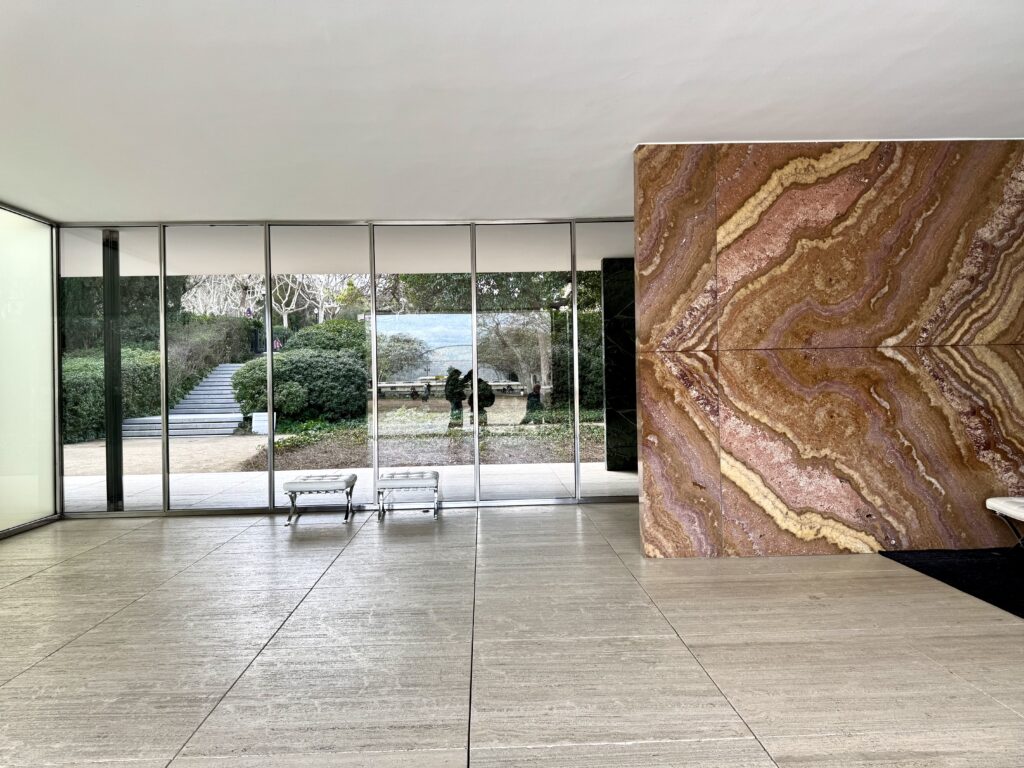
In the core, you can see the luxurious materials van der Rohe favored and get a sense for the sleek style.
You can also admire the “Barcelona chair.” It’s a tubular steel and leather-cushioned chair on a curving X-shaped frame.
It’s an icon of 20th century furniture design. I couldn’t help wondering if it was at all comfortable. But Mies says it was.
Is The Pavilion Worth Visiting?
I’m not sure the pavilion is worth going inside given the high price point. There is simply not that much to see. You could be in and out in 15 minutes.
As an alternative, you can walk around the building and catch a glimpse of the interior. But if you try to walk up to the pool and front facade, you will be shooed away by a guard.
On the other hand, the pavilion is undoubtedly an appealing place and a paradigm of the architecture of that period.
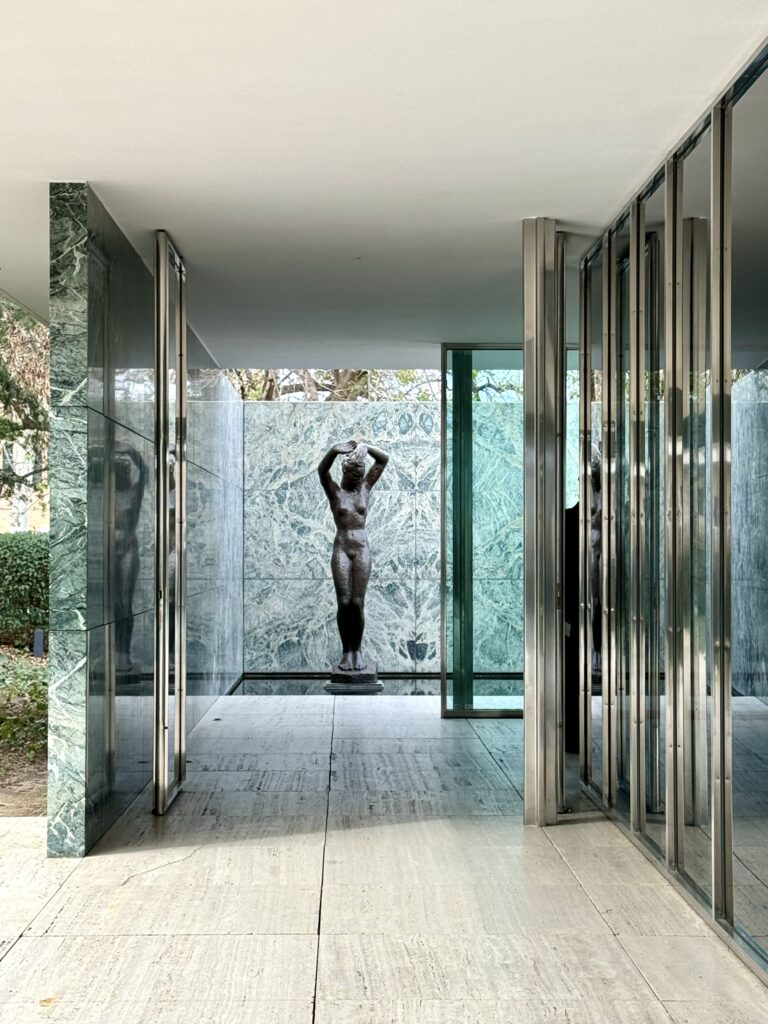
The simple lines and design create a serene atmosphere. And, in March at least when I visited, there were very few people inside.
The building still seemed fresh and modern to me, a pure composition despite the passage of time.
I enjoyed my visit, but perhaps it isn’t for everyone. It was a nice contrast to the over-the-top Gaudi architecture the city is known for.
Practical Information
Address: Avinguda Francesc Ferrer Guardia 7
Hours: Monday to Sunday: March to October from 10:00 am to 8:00 pm
& November to February from 10:00 am to 6:00 pm
Tickets:
8 €. Click here to pre-book a ticket. Though 8 euros seems like a high price, the money does go directly to the conservation of the building.
The museum is free on the first Sunday of each month. There is a guided tour in English at 10:00 am on Saturday.
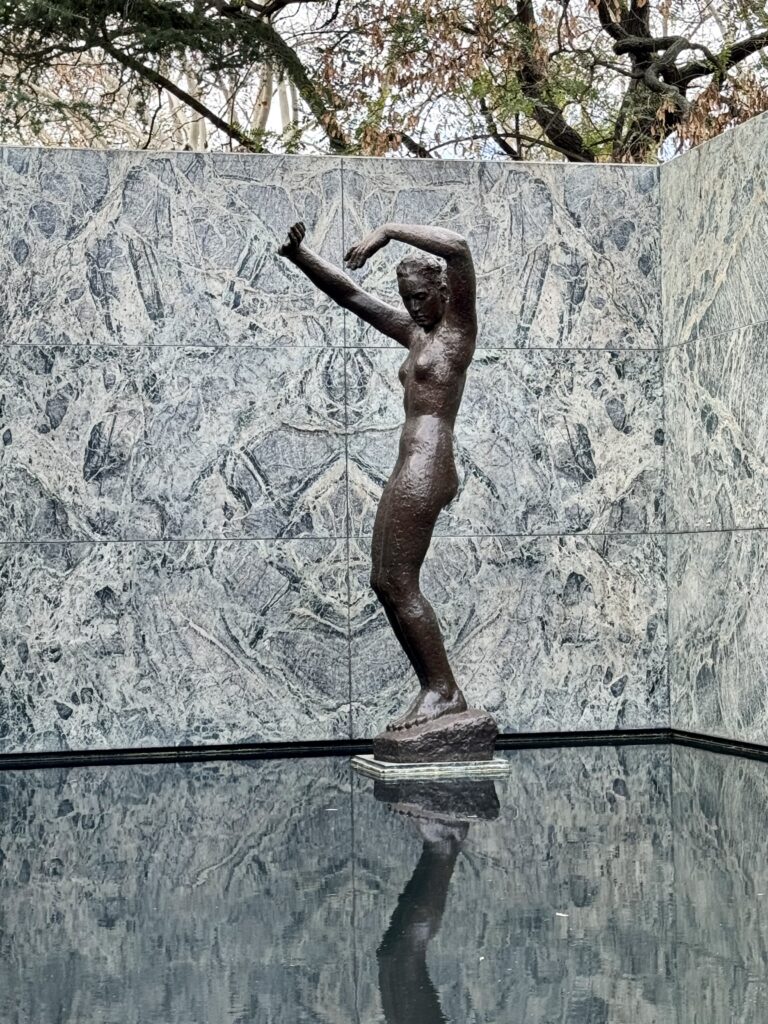
Pro Tips:
There is no ticket booth. As you approach, a guard will come up to you and you can purchase a ticket from him or her.
If you want to explore Montjuic further, take the escalator up to visit the National Museum of Catalan Art and then walk to the Joan Miró Foundation. The latter is housed in another modern architectural gem.
I hope you’ve enjoyed my guide to the Mies van der Rohe Pavilion. You may find these other Barcelona travel guides useful:
- 1 day in Barcelona itinerary
- 3 days in Barcelona itinerary
- what to do in the Gothic Quarter
- hidden gems in Barcelona
- landmarks in Barcelona
- guide to Sagrada Familia
- guide to Casa Batllo
- guide to La Pedrera
- guide to Palau Güell
- guide to architecture in Eixample
Pin it for later.

